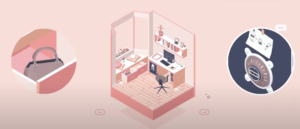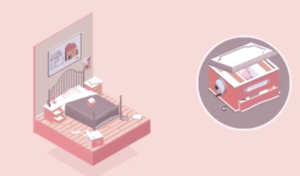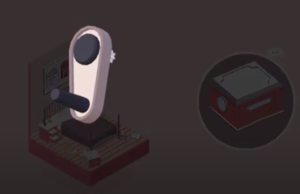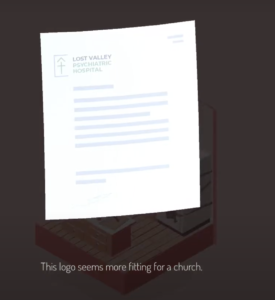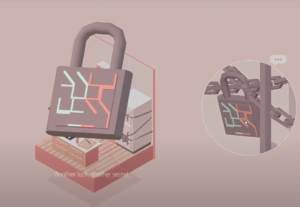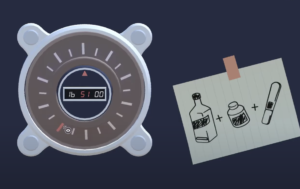For this critical play I chose to play The Almost Gone (iPad). The game is set in a house/neighborhood, where the player has to piece together clues to find out more about the main narrator’s (a young girl) story and what happened to her family. With an isometric design and an analogous/complementary color scheme, the game has a beautiful and simple aesthetic, with just enough fidelity for the game (and its puzzles) to be engaging.
one of the rooms in the game, pink/salmon analogous color scheme. Zoom-in view for the important parts of the room… I later recognized that these zoom-in circles either revealed important narrative details, gave me a physical clue to be used later, or needed a physical clue to be solved.
The game incorporates a lot of puzzle types. The easier ones involve purely point/click and navigation to piece together parts of the, while others require some more thought. I noticed that the designers leverage proximity to solution as a way to make solving a piece of the puzzle easier/harder (e.g., a key to the parent’s bedroom on the second floor found deep into the first floor). For the inattentive player, this may have been a big barrier to solving certain pieces, but the designers of the game did a beautiful job of highlighting important information. They also provided clues in details such as color for what order to do things, or a note to accompany it etc…. If you didn’t have anything that matched those hints, it also indicated to you that you missed something, prompting you to go back.
the handle to the music box was located in the same room (bedroom) — proximity to solution made this an easy solve
the green symbol on the paper was a clue to solve the lock. it was found several rooms down, which made it more difficult to solve. the narration text at the bottom also highlights the logo as being something possibly important
I played the first chapter with some help from the walkthrough, and part of the second chapter without assistance. While I really enjoy it so far, I wonder how different my experience would have been if I hadn’t used the walkthrough. In the second chapter, without any help, I had gotten some big parts of the puzzle (which was SO satisfying), but after a while still found myself stuck.
the picture to the side of the combination lock gives you some clue for what you need to solve it. (as a novice player I didn’t even notice this… but I totally should have!)
Since I’m not an avid puzzle-solver, I can’t say much about the difficulty of the puzzles in this game, but The Almost Gone definitely attempts to balance the novice’s patience with the experienced player’s ingenuity. While giving overt hints when players are stuck may ruin the satisfaction of solving the puzzle themselves, the game has so many layers to its puzzle (the layout of the house/garden/neighborhood, the smaller clues that lead up to a big solve, and finding a new room) that it could potentially leverage to nudge players into a better position for the big satisfying solves.
Overall, I really like this game and will continue playing! The narrative that is being revealed is super compelling, the art is really beautiful, and the game gives enough small solves along the way to keep the player engaged.


